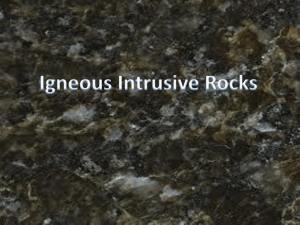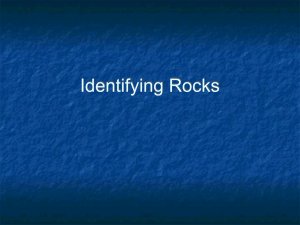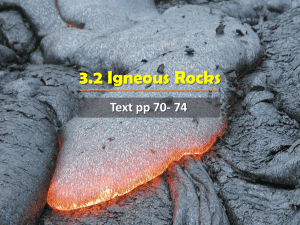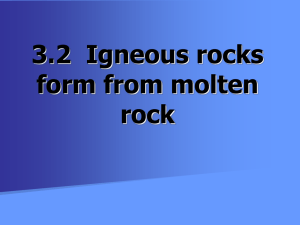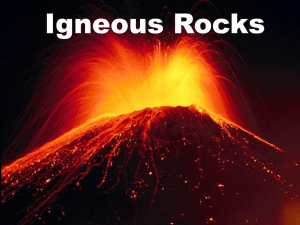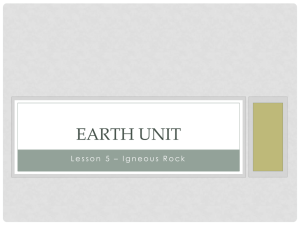quartz igneous
advertisement
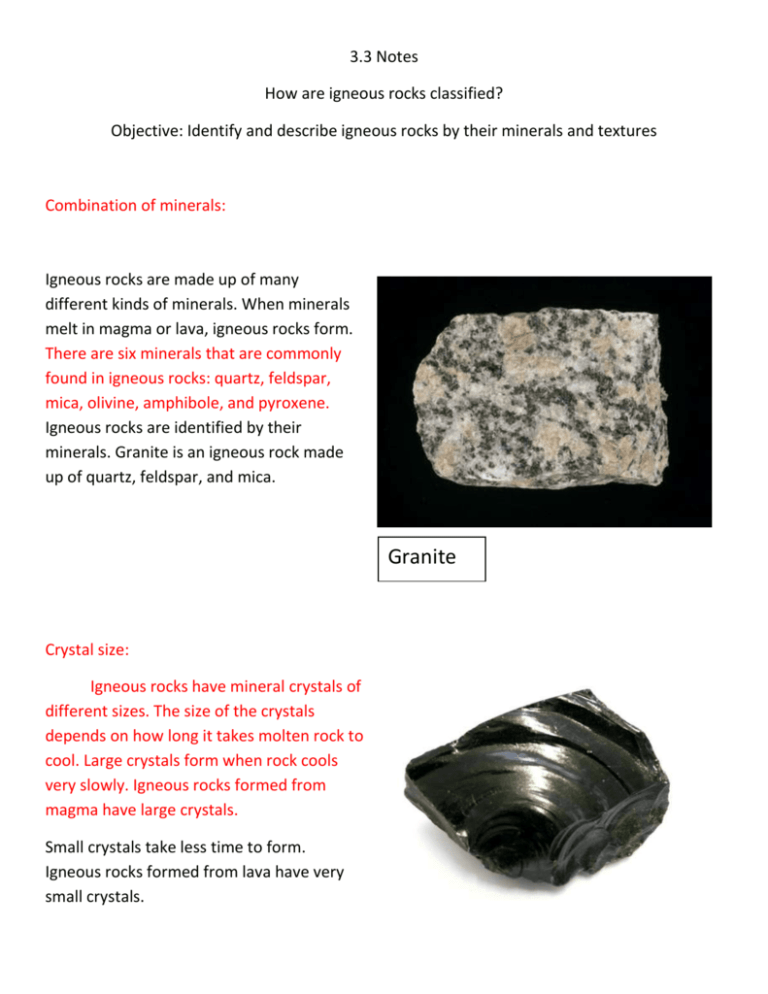
3.3 Notes How are igneous rocks classified? Objective: Identify and describe igneous rocks by their minerals and textures Combination of minerals: Igneous rocks are made up of many different kinds of minerals. When minerals melt in magma or lava, igneous rocks form. There are six minerals that are commonly found in igneous rocks: quartz, feldspar, mica, olivine, amphibole, and pyroxene. Igneous rocks are identified by their minerals. Granite is an igneous rock made up of quartz, feldspar, and mica. Granite Crystal size: Igneous rocks have mineral crystals of different sizes. The size of the crystals depends on how long it takes molten rock to cool. Large crystals form when rock cools very slowly. Igneous rocks formed from magma have large crystals. Small crystals take less time to form. Igneous rocks formed from lava have very small crystals. Some igneous rocks have no crystals because lava cools so quickly that there is no time for crystals to form. Obsidian is an igneous rock that does not have any crystals. How are cooling rate and crystal size related? Texture: The size of the crystals in an igneous rock is used to describe its texture. Granite has large crystals that you can see and feel. Rhyolite has very small crystals that are hard to see. Basalt is another commonly found rock with small crystals. Rhyolite Igneous rocks are classified by their texture. Igneous rocks with large crystals have a coarse texture. Igneous rocks with small crystals have a fine texture. Igneous rocks that do not have crystals have a glassy texture. Slow cooling magma large crystals coarse texture Fast cooling lava small crystals fine texture Very fast cooling lava no crystals glassy texture Classify granite, obsidian, basalt, and rhyolite according to their textures.


